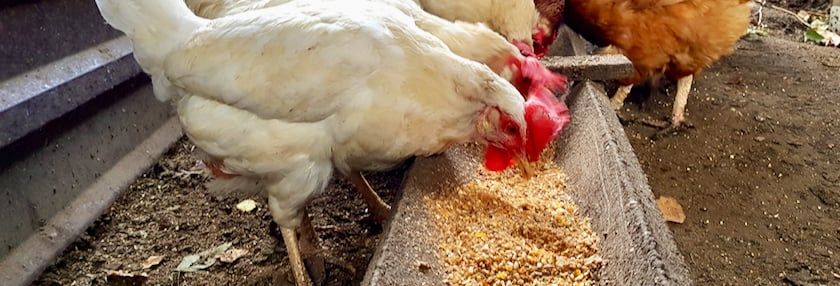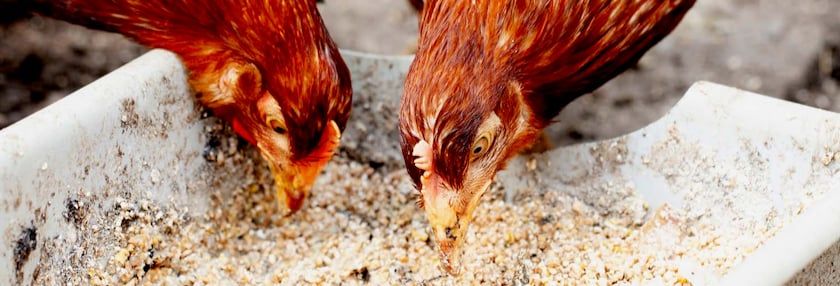What a Corn-y Idea
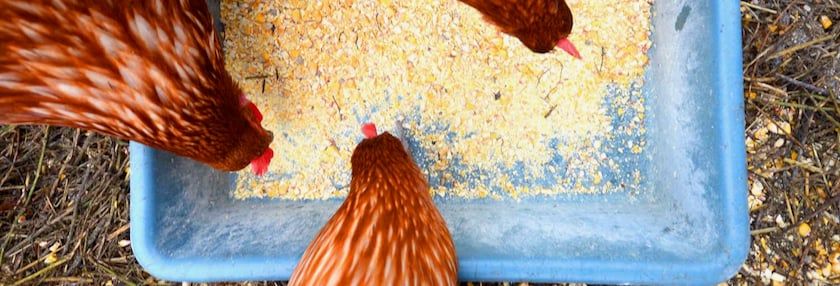

Are you doing more harm than good with winter feed changes?
Every winter, people on internet forums tout the benefits of feeding extra corn to chickens to “warm them up.” It sounds like a good thing, perhaps like an act of kindness towards treasured birds. But despite its popularity, there are numerous nutritional, physiological, and behavioral reasons not to do this.
Good question, right?
The first question that comes to mind is: Why corn? Corn is found in most poultry diets already.
In high quality feed, it’s probably the first or second ingredient. Corn is high in energy and low in anti-nutrients that are prevalent in other cereal grains. The digestible amino acid profile is complementary with that of soybean meal.
But despite all these great things, corn isn’t high in anything that would “warm up” chickens.
So, what’s the big deal about corn?
Nutrients fall into three major categories: protein, carbohydrates, and fat. Of these, corn is high in carbohydrates with 60% to 75% starch and is low in protein (around 7%) and fat (around 3%).
The reason this is important is due to heat increment, or in other words, the amount of heat lost of an ingredient via metabolism.
Nutritionists partition dietary energy into various categories that tell us where it goes as it is lost to various physiological processes. We can visualize this process using an Energy Flow Diagram (Figure 1). The total amount of energy consumed is called gross energy.
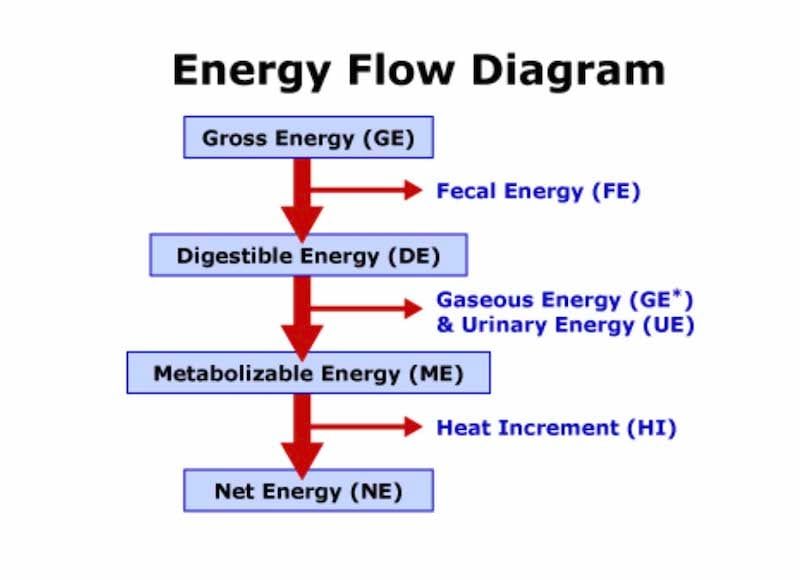
Just like electricity or internal combustion, the extraction of usable energy from food isn’t 100% efficient. Energy is lost to respiratory gas, fecal, and urinary excretion, and heat production. As you can see in the above diagram, before we get to net energy (the energy available for growth or egg production) we have calories lost as heat increment.
This is the body heat produced through inefficient metabolism.
Between the various macronutrients, fat has the lowest heat increment, because the efficiency of fat deposition is higher than that of protein deposition (don’t we all wish it was the other way around!).
Unfortunately for people who feed corn to their birds as a heating mechanism, starch has a higher heat increment than fat, but the heat increment of protein is more than twice that of starch!
Additionally, when we add whole corn to our bird’s diet, it dilutes the nutrients coming from their feed.
For example, if you feed your birds a 16% protein layer feed and they consume 100 grams of feed, then they consumed 16 grams of protein. If instead of 100 grams they only consumed 90 grams of feed and 10 grams of corn, then their protein intake is reduced by over 5%.
So not only were all the vitamins, minerals, enzymes, etc., diluted, but the overall heating effect of the feed consumed was decreased.
Don’t forget body heat
There are more than nutritional reasons to pass on offering extra corn. It seems that we sometimes forget that chickens are covered with feathers and are very social creatures.
Many free-range or pastured egg companies like to point out how much space they give their birds by noting the low number of birds per acre. But if you have 100 acres and 100 chickens, there’s not going to be one hen per acre, as we all know there are going to be a lot of hens congregating in a small area.
As long as chickens have adequate shelter so they can get out of the rain, and preferably wind, they will instinctively cuddle up and can withstand even the harshest winter.
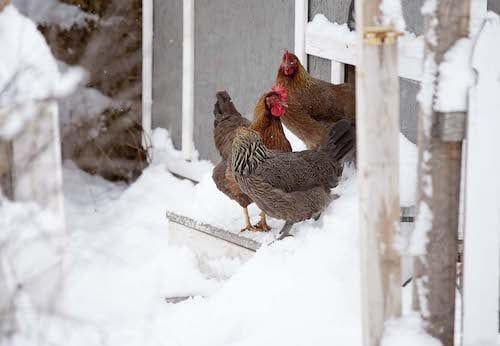
Body heat output can be substantial if birds are allowed to mingle in a sheltered area.
Remember that chickens have existed for thousands of years and thrived without heat lamps, supplemental corn, or any other strategy to keep them warm.
A single 5-lb. Rhode Island Red hen should be able to withstand an outdoor temperature of 15 to 25°F while maintaining daily egg production before requiring additional food to keep warm. This temperature is affected by relative humidity and wind speed, but chickens have a remarkable ability to increase their heat production metabolically (around 70 calories per day).
Remember this is for a single hen, but if multiple birds are allowed to gather in a sheltered area, that temperature goes way down.
Basics: food, shelter, water
Hens are incredibly resilient and are designed to be able to withstand a wide range of ambient temperatures. Decreasing the heat increment of their food by replacing some of it with corn does them no favors, and decreases the metabolic heating effect. It also dilutes vitamins, minerals, and any functional feed additives that are there to support gut health, nutrient digestibility, or immune function.
Just give them a sheltered area to withdraw to at their discretion, support their natural behavior, and provide a high-quality feed and your birds will be happy all winter long.
Tags:Feed 4 Thought

Chicken Whisperer is part of the Catalyst Communications Network publication family.










